Ageratum in your flower garden |
The name of the plant comes from the Greek particle "a", meaning "not" and the word geras - old, which indicates its ability to retain the color of flowers for a long time. In Russian, it is also called long-flowered. The genus includes about 60 species growing in tropical and subtropical regions of Central America. Belongs to the Aster family, or Compositae. In our material, we will tell you about the care, reproduction, diseases and pests, as well as the decorative use of ageratum.
General characteristics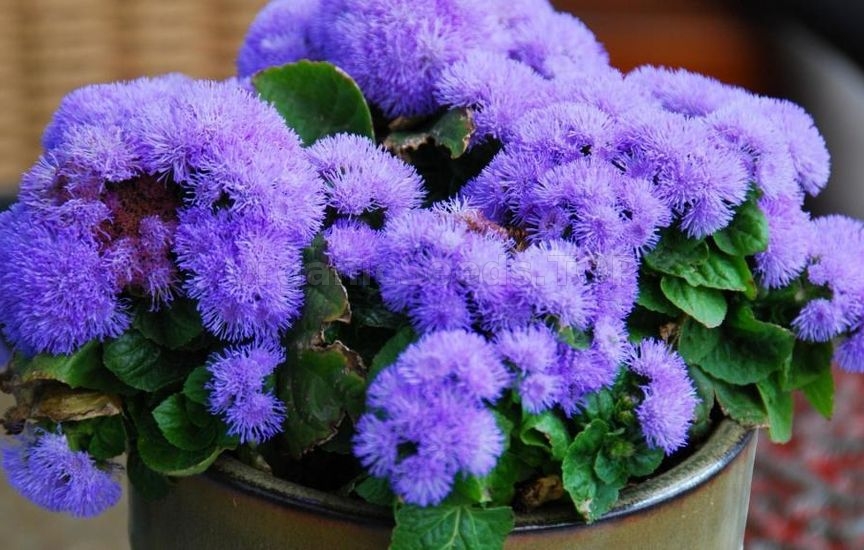 In ornamental gardening, the Houston ageratum, or Mexican ageratum (Ageratum houstonianum Mill. sin. A. mexicanum Sims.), originating from Mexico and Peru, is best known. This is a perennial herbaceous evergreen plant, which in our climatic conditions is grown as an annual. The plant is highly branched, 10-60 cm high, pubescent with colorless short hairs. The most valued undersized forms. The root system is fibrous. Adventitious roots develop easily. Leaves: triangular, rhombic or oval, serrated or crenate along the edges, arranged oppositely. The lower leaves are petiolate, the upper ones are sessile. Flowers: small, narrow-tubular, fragrant, bisexual. The style and its two-lobed stigma are almost 2 times longer than the corolla, which gives the inflorescences a special decorative effect. The flowers are collected in small inflorescences-baskets with a diameter of 1-1.5 cm, which, in turn, form loose or dense corymbose inflorescences up to 10 cm in diameter and completely cover the entire plant. Most often, the flowers are blue, but there are varieties in which they are white, blue, lilac and pink. Plants are distinguished by abundant and long flowering - from June to frost. Fruit: small wedge-shaped achene with five faces and a tuft. 1 g contains 6-7 thousand seeds, which remain viable for 3-4 years. Choosing a place to land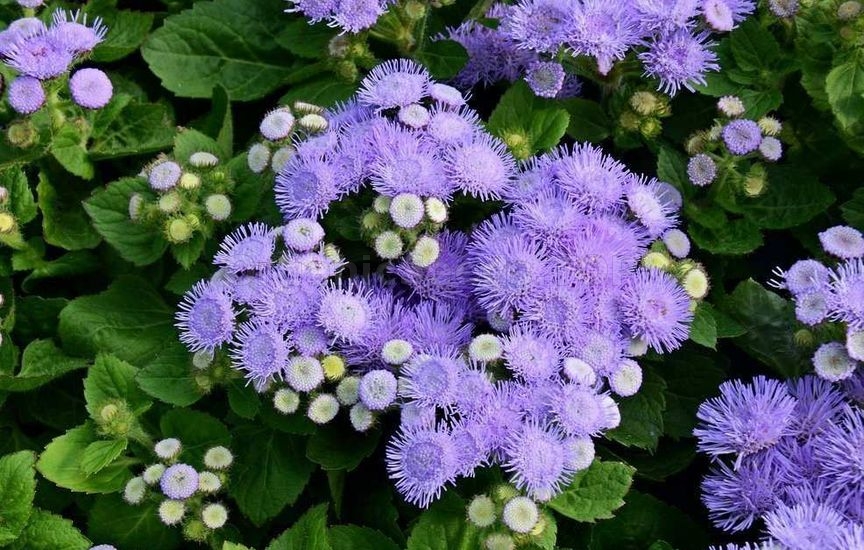 Ageratum is photophilous and thermophilic; it cannot stand even light frosts. Belongs to drought-resistant species. Requires open, sunny places, stretches out in partial shade. Prefers sandy and loamy non-acid fertile soils. Does not tolerate damp stony soils and fertilization with fresh manure. Attention! Ageratum leaves contain substances that can cause irritation of the mucous membranes and an allergic reaction. We propagate the ageratum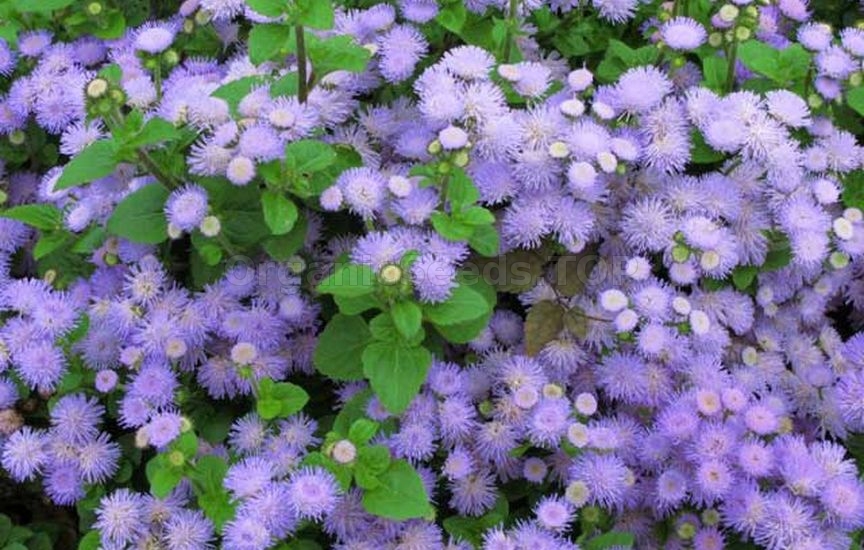 With seed propagation, there is a great variety in the shape and height of the bushes, the size of the leaves, and the color of the flowers. Varietal purity in most species is not more than 80%. Seeds are sown in early April in greenhouses or greenhouses for seedlings. Seedlings appear 10-12 days after sowing. In the phase of two leaves, seedlings dive into greenhouses or peat pots. Seedlings do not tolerate excess moisture. Before landing in a permanent place, they dive twice and feed twice with full mineral fertilizer. Seedlings do not tolerate dampness. Watering should be done in the morning, and greenhouses should be ventilated frequently. 10-14 days before planting the seedlings, the frames are removed from the greenhouses and covered again only in case of a threat of frost. They are planted in open ground after the end of spring frosts, maintaining a distance of 15-20 cm between plants during planting. It is better to plant in sunny, sheltered places. Ageratum blooms 60-70 days after germination - from late June to October. For abundant and long flowering requires regular watering. Diseases and pests of ageratum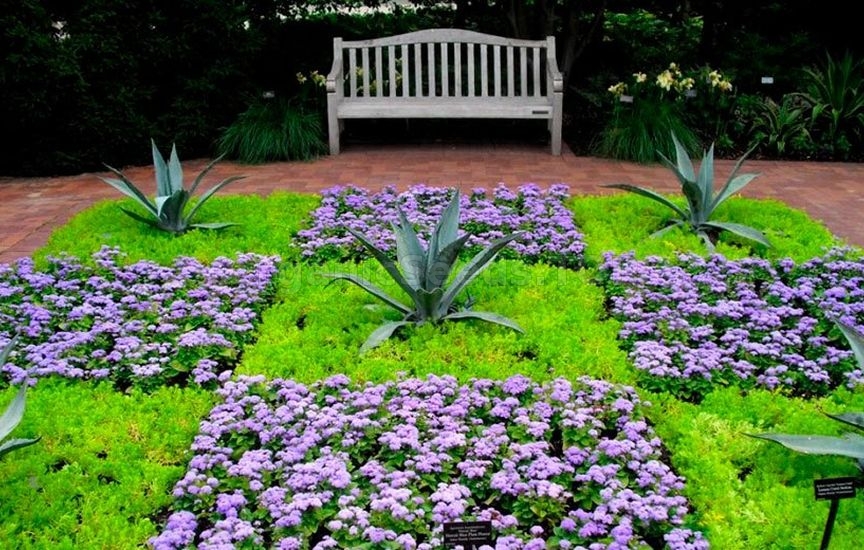 These include: root rot, bacterial wilt, cucumber mosaic virus, leaf and root nematodes, spider mites and cutworms. This plant is affected by the whitefly, while yellow spots appear on the leaves. Affected leaves must be removed and the plants repeatedly treated with an infusion of insecticidal plants or an emulsion containing mineral oils (with an interval of a week). Decorative application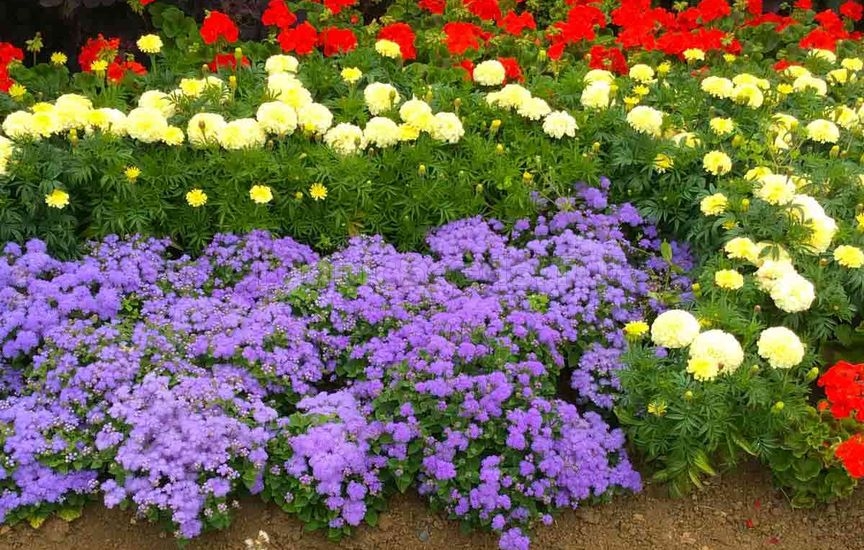 Ageratum is widely used for decorating flower beds for various purposes - in flower beds, borders, borders, group plantings, mixborders, when landscaping balconies and as a pot culture for autumn maintenance indoors. Ageratum lends itself well to a haircut, after which it blooms profusely. 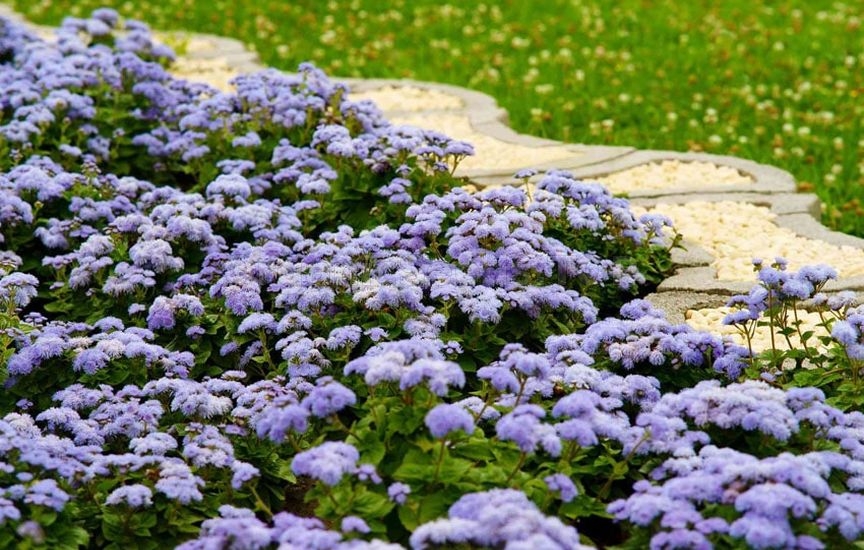 Tall plants are suitable for cutting into bouquets, where they are combined with other, better large-flowered, bright plants. Ageratum will stand in water for a long time if the peduncle is cut off when the middle flowers in the inflorescences have just opened. It goes well with annuals: marigolds, calendula, zinnia, antirrinum, verbena and perennials: gelenium, heliopsis, rudbeckia. You may need:Buy ageratum seedsBuy flowers seedsBuy herbs seeds |
|
|
